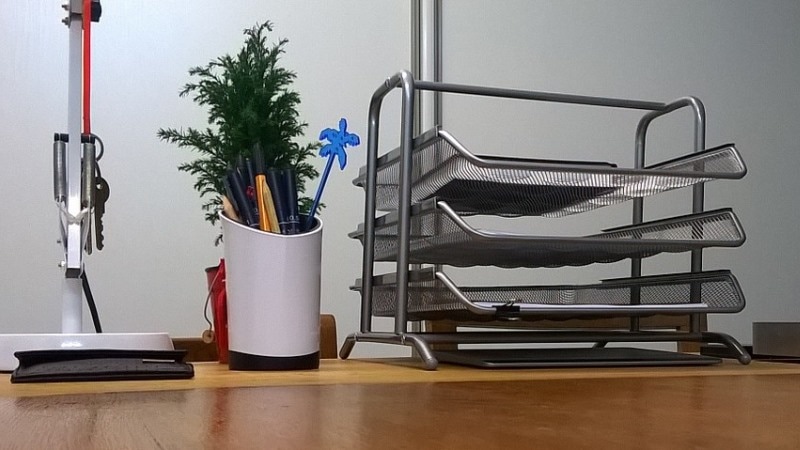That leaves the “to do” pile. So the answer here is easy: all “to do” items go into the IN tray and are to be dealt with like any other item in the IN tray. Bills need to be paid, calls made, etc. just like you would do with new bills and notes arriving with the mail or written down as notes. After a complete backlog clearing operation, you should end up with only two separate trays: the IN tray that has its home somewhere in your house where you sift through mail, and a “file” tray (and I suggest you invest in a tray for this as well) that sits in your office, where you can easily put down whatever actions you have finished. And of course, there is the “recycle” pile! Tip: When you decide on your “IN tray” and “file” tray, I suggest to use something without a lid. You WANT to be aware that things are in there. Anything with a cover will lead to forgetting deadlines, and losing track of the need to follow up on certain things. Once your “file” tray is starting to fill up, it’s a simple matter to go back to the instructions for the “file” pile outlined earlier. In order to keep clutter from accumulating and in the interest of easily locating papers when you need them, it is good practice to regularly file away the papers in the “file” tray. There is something to be said to let those files accumulate a little bit and not file every single paper separately. Put aside some time whenever you see the tray is starting to fill up, and you’ll do just fine. For some people that is every couple of weeks, for others (like myself) it’s twice a year. Tip: whenever you start filing things away, think about clearing out stuff you don’t need! It’s basic maintenance, but it will save a lot of time and effort along the line. The really strange thing is that normally, any kind of paperwork in need of doing really fits into those two trays. Just think about the workflow involved here:
Talk about a clean desk! This is a simplified version of more complex situations, of course. I am aware that some situations require a more detailed approach, sometimes papers will have to be spread out in order to finish the business, and often two trays may not be enough (e.g. there could be need for a “follow-up” tray or a “pass on to the accountant” tray, etc.). Be that as it may, the main lesson here is that “less is better” on all levels concerned. Keep those following ideas in mind whenever dealing with your paperwork, and you should do quite nicely:
Clearing a backlog of papers to be filed from a cluttered desk should be a one-off activity and once it is done, it is important to adhere to a regular filing/clearing system as a matter of maintenance. Doing so will most likely be enough to keep your system going. There may be times when things pile up on your desk again, it happens to the best of us when there are other – more important – tasks at hand. However, if you have decluttered your desk once, and have found it to be more enjoyable to be able to work quickly and efficiently without the clutter, you will now be able to re-apply the skills you have learned here with the knowledge that it is a job worth doing. And you can be certain that the second time around you will do it much faster than the first time… that is the power of experience at work! If you have enjoyed reading this, you may find these other articles interesting: Comments are closed.
|
Ask the ClutterMeisterIdeas to help clear away the mess in your homes and in your minds.
Feel free to share any of my posts, but please put in a backlink to the original blog post. Thank you. The author
Hi, my name is Tilo Flache. My mission: help clients declutter mind and space.
This blog contains pointers for your journey towards a happier living experience. Archives
November 2023
|




 RSS Feed
RSS Feed




